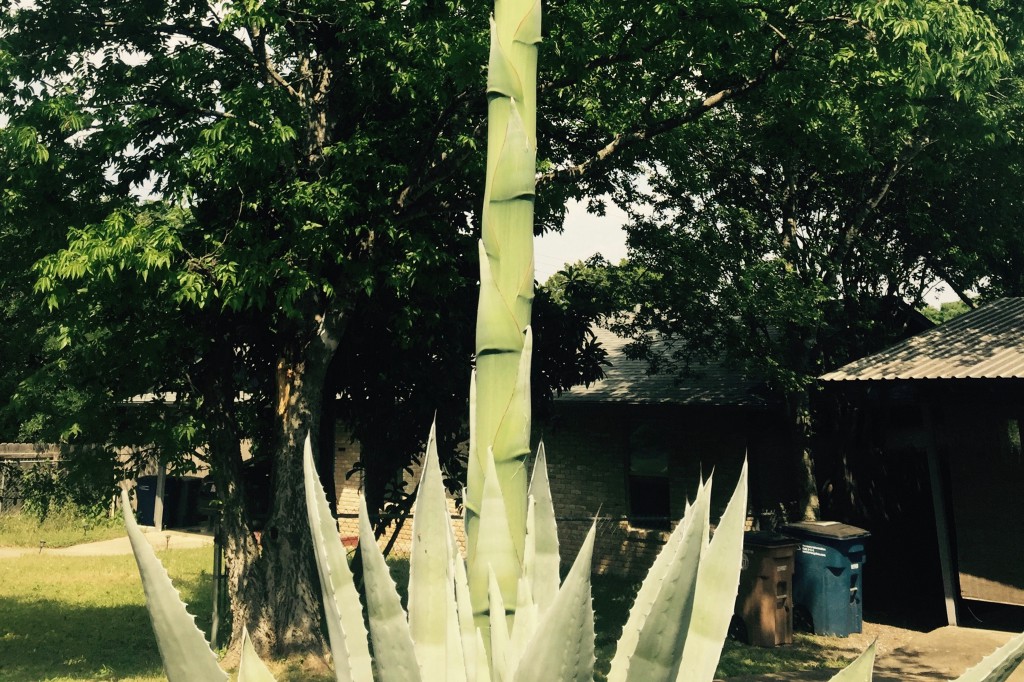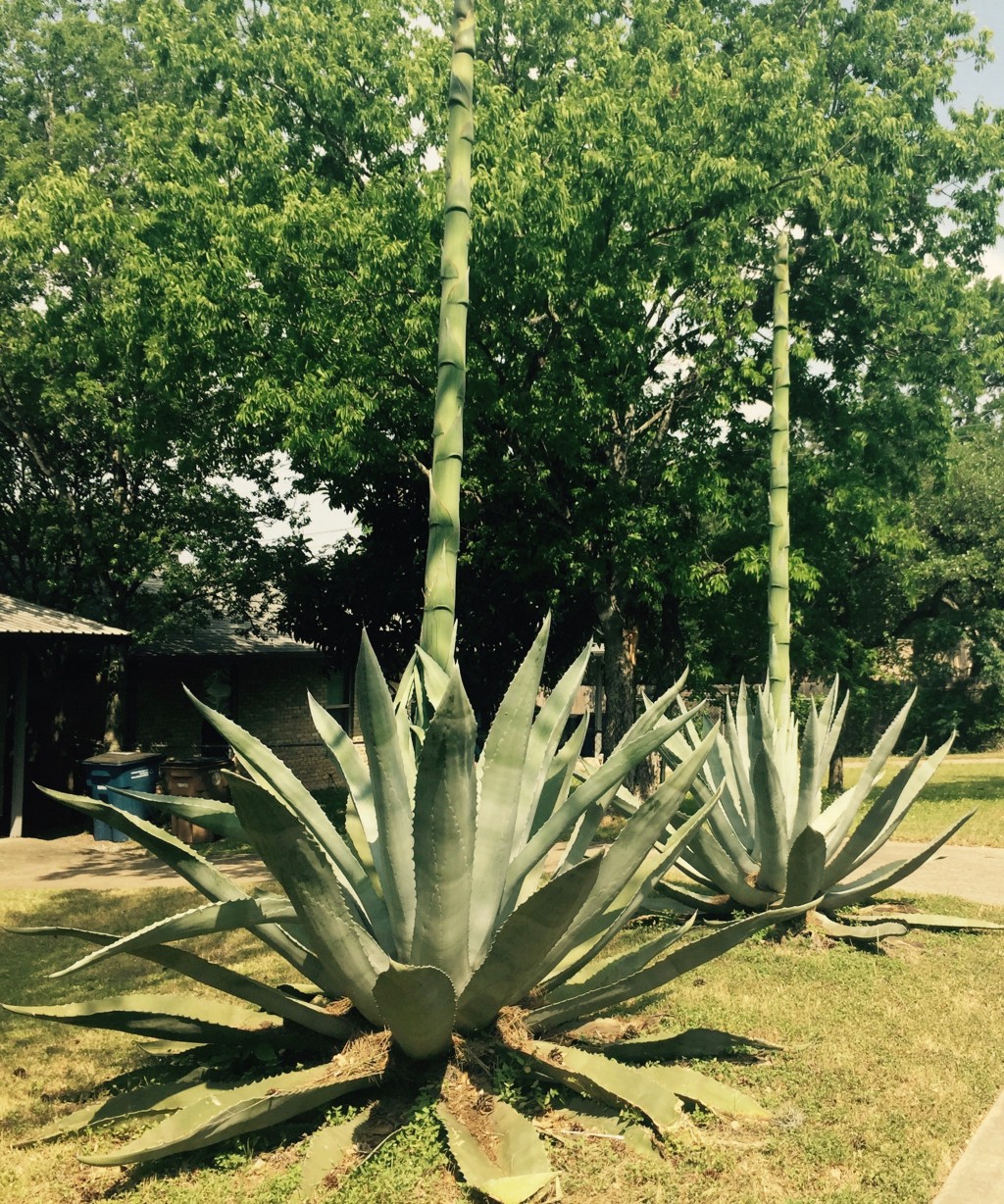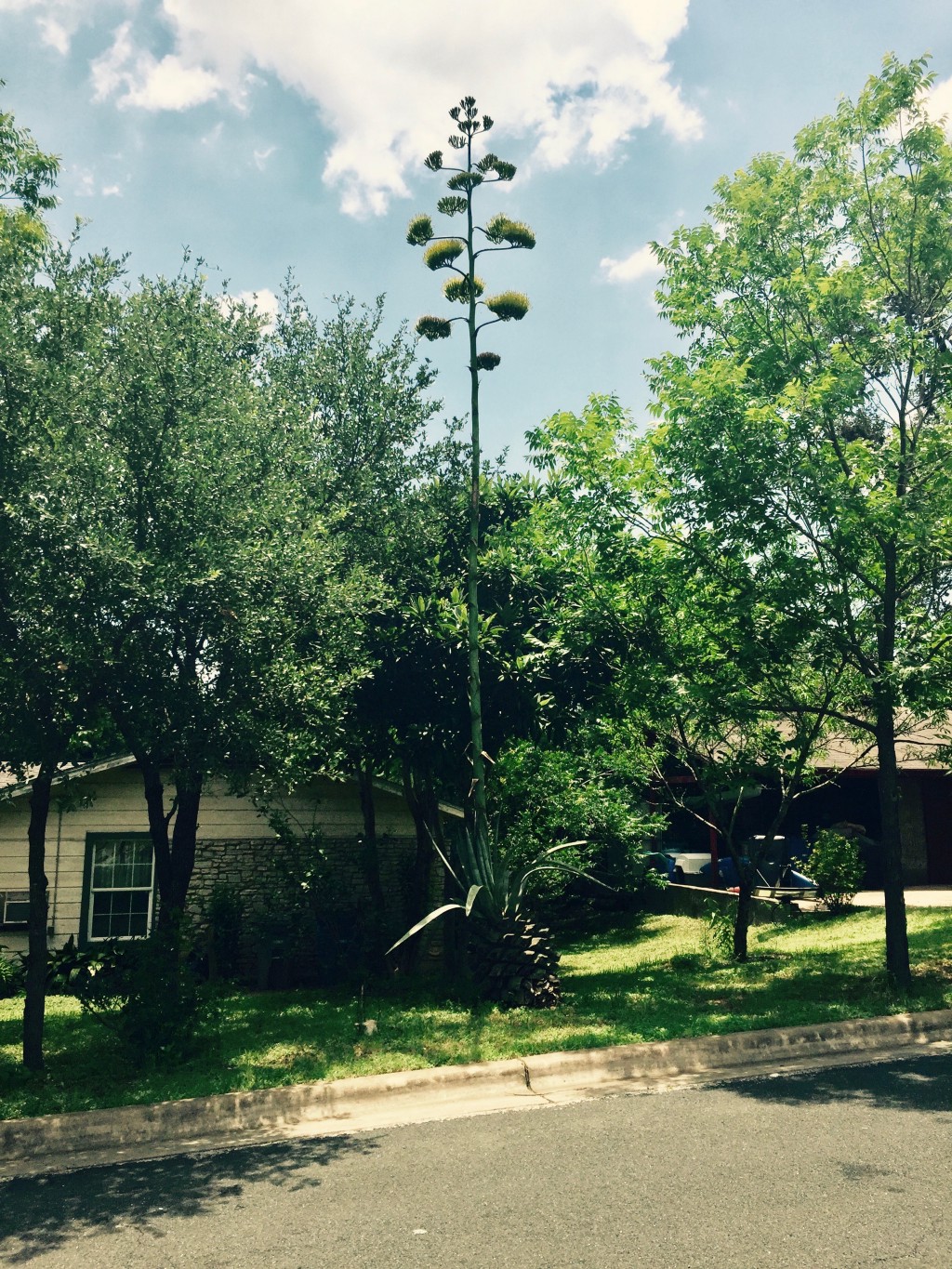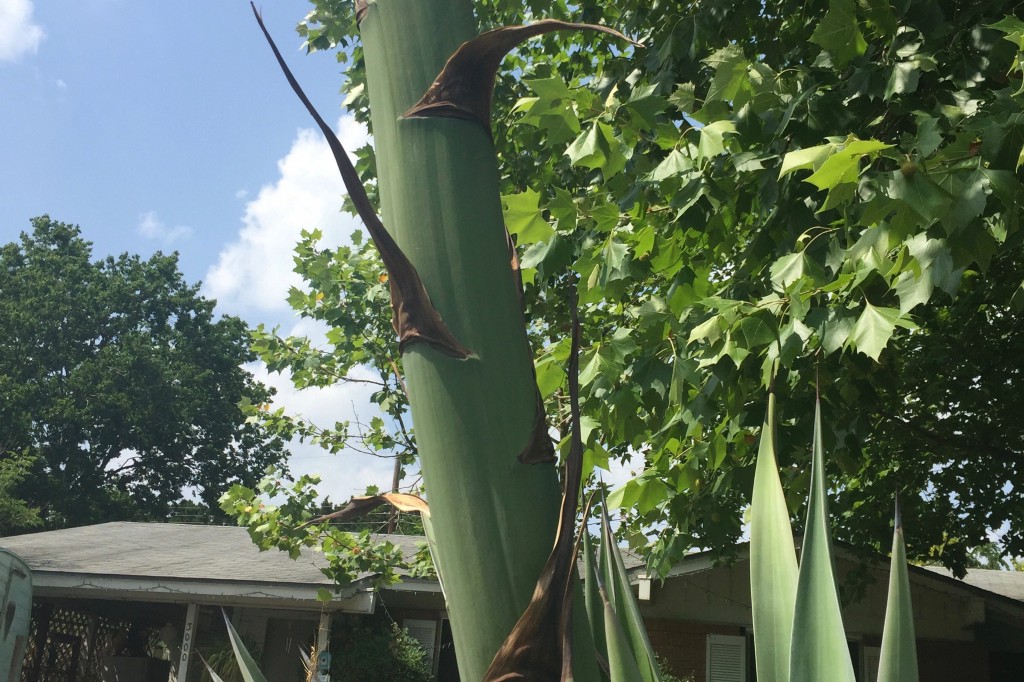The Agave Plant's Asparagus Death Fetish
The charismatic megaflora reproduces just once and dies.

You never know when you’ll sprout a giant asparagus spear from your heart. This is what agave plants decide to do — out of nowhere — after sitting quietly in your yard for fifteen or twenty years. In Austin, Texas, agave plants are a static detail on the landscape — you find them arranged out front of your favorite mid-priced Mexican restaurant, trapped in a traffic island between a Bed Bath & Beyond and a Whataburger, groomed into oversized pineapples in grandma lawns. I have two of them in my yard and didn’t even realize it until one poked me in the leg.
The agave, beautiful though it may be, can lull you into a sense of complacency. One day you wander past the agave slumped against your mailbox like a drunk, and it’s waving a telephone poll–sized asparagus spear at the heavens. I’m not being metaphorical about European colonization in the Americas or anything with this asparagus thing. It looks like an asparagus spear, thick as a tree trunk, that could be served at a farm-to-table restaurant for gods — jutting out of the center of a lazy agave. You say aloud, “That’s weird.” And the guy who lives in a camper van in your neighbors’ driveway tells you, “Did you know agaves are related to the asparagus?”

Agave (genus Agave) is a species of 200 plants in the Asparagaceae family. Native to Mexico, the southwestern U.S., and the Caribbean. The most popular type of agave is most well known for its use in the production of tequila, mezcal, and agave nectar (a sweetener). The century plant, or maguey, species of agave is most commonly recognized as a landscape decoration. The agave’s leather-like leaves are distinctive for their spiny prickles. Agaves grow in a symmetrical rosette shape; some stay tight and spherical, while others become floppy and unwieldy. Under the right conditions an agave can grow up to 20 feet in diameter, about the size of a bouncy castle. Most are content to live in pots or decorate grandmas’ lawns. Beyond all that, agaves are a mass of contradictions.

Number one: An agave is not a cactus.
Often confused for a cactus because it is prickly and lives in the desert, I guess is the reasoning, agaves are not cacti — they’re a whole separate type of plant from a different clade. Like the aloe — which they are also not — agaves have fat leaves that thin out and are kinda spiny. Some agaves produce sap that you can use to make pulque — a fermented, alcoholic beverage that predates tequila by a few millennia. Mayahuel, the Nahuatl goddess of agave, served pulque from her 400 breasts. She dated Quetzalcoatl for a while. Mayahuel was not a cactus either.
Number two: Agaves lie about their age.
Though they are also known as century plants, most agaves only live for fifteen to thirty years. Opinions vary at the garden center, but you might be able to extend an agave’s life by trimming its lower leaves — keeping only the leaves near its top, or the center of its rosette. Freshly pruned, agaves look like over-sized supermarket pineapples. Whether or not this tactic will work is really for the agave in question to decide. Once an agave has sprouted flower buds from its agave trunk, its transformation into a whole new plant is complete — and all you can do is help get the plant’s affairs in order. No matter what you do, you’re looking at a plant that will outlive a house cat or two. Give or take.
Number three: Agaves are not asparaguses.
The agave is part of the asparagus family, and yet it is not an asparagus. Near death, agaves transform decades’ worth of energy into an enormous asparagus death spear, as tall and sturdy as a cell phone tower tree. With a big burst of high-weirdness, the agave makes its last stand. Like the agave, the common dinner-table asparagus is part of the plant group monocots, or monocotyledons. They have only one seed leaf (cotyledon). A lot of people have a lot to say about this subject. My favorite definition comes from Dave’s Garden:
A cotyledon is basically the first leaf that sprouts from a seed. Monocots have one, and dicots have two. Big deal. Some plants have one leaf to start their lives out with, and some have a pair. Seems like too little a difference to base an entire plant classification system upon. But then, I suppose we have to start somewhere.
So there you go.

Other monocots include orchids, most types of grass, palms, lilies, and the pineapple. Asparaguses are long-distance relations from Europe, Africa, and Asia.
An agave only reproduces once, right before it dies. The process of reproducing once — flowering, setting seeds — and dying is called monocarpy. Throughout its lifetime, an agave stores up all of its energy, waiting for the right time to spread its seeds and reproduce. It hunkers down, holding all of its energy in its heart, weathering years of drought and times of heavy rain — and when it rains in the desert, it’s like all the sky demons decided to dump out their above-ground pools at once. Then, for reasons of its own, the agave grows a massive, flowering asparagus spear out of its heart.
When the agave’s asparagus tree flowers, the agave hosts a pollination sex party. Nectar-feeding bats, ants, hawkmoths, beetles, and doves arrive to spread agave pollen and seeds. When it dies, the agave’s asparagus spear crashes to the ground, discarding seed pups willy-nilly to produce more agave plants. Or flatten a Subaru Outback in a South Austin cul-de-sac.

Clearing out a dead agave is a massive pain. In addition to their prickly leaves, agaves have dense root systems. If left to rot, the blue-gray leaves will become an unwieldy pile of white and crumbly plant decay, like a fluffle of bunniculas had an agave hoedown. Dead agave piles also seem to attract old Doritos bags. If a teenager can find sustenance in it, look for the discarded remnants in the nearest agave corpse. In my neighborhood, there’s a big dead one wrapped around a cactus that’s about to die that’s also wrapped around a mailbox. This same house is always putting out boxes of old karate trophies, like someone is going to take them.
Bats and agaves are believed to have evolved together. Long-nosed bats, which are an endangered species, feast on agave nectar. The bats roll around in the pollen grains. When they fly off to find more food, they transfer new pollen — promoting cross-fertilization. Here’s an explainer from Bats Magazine:
Both the plant and the bat benefit from this relationship, and therefore are said to be mutualists. Scientists believe that this association is the result of the coevolution of bats and plants and that the dependence is so strong that the plants could not reproduce without the intervention of the bats, which would starve to death if the plants were not present. This relationship seemingly is quite sensitive to disturbance.
Tequila production is one such disturbance because it endangers the sustainability of long-nosed bat populations and agaves. Tequila, which is produced from the heart of the agave azul, requires harvesting agaves before they flower. So, while the death of so many century plants in my neighborhood is tragic, it is also beautiful because it’s keeping a bunch of long-nosed bats from starving.
The web of life is a tangled thing and has connections everywhere. To our current understanding, there’s no other planet as rich with life as ours. Sure, there could be some phosphorescent fish swimming beneath the frozen seas of Europa or tardigrade-like critters clinging to water-vapor geyser on Ceres. If the agave’s asparagus death spear tells us anything, however, it’s that life is short and precious — quiet bonds exist between all living things — and it’s never too late to get weird.
